LG 50 inches Nanocell Series 4K TV ReviewLG's OLED TVs have consistently topped various lists of the "Best 4K TVs" over the previous few years, becoming an acronym for premium image quality. What exactly are LG NanoCell TVs? You may be in touch with LG's OLED TV lineup, which includes the LG C1, LG G1, and more. We wish to change the fact that the NanoCell TVs that are placed next to them often get less attention from the press. The greatest LG TVs without OLED panels are, in essence, those with these so-called "NanoCell" displays; they are found in LG's mid-range and above entry-level LCD TVs. Unstated here is the desire to contend with Samsung's superb QLED TVs while highlighting the best LCD panel televisions from LG. However, although the company's OLED models have been widely honoured, LG's LCD TVs, which are sometimes referred to as NanoCell, haven't drawn as much attention. Despite being capable of performing well, the NanoCells just haven't been able to rival the outstanding quality of LG's OLEDs or the affordability of LCD models from other manufacturers. 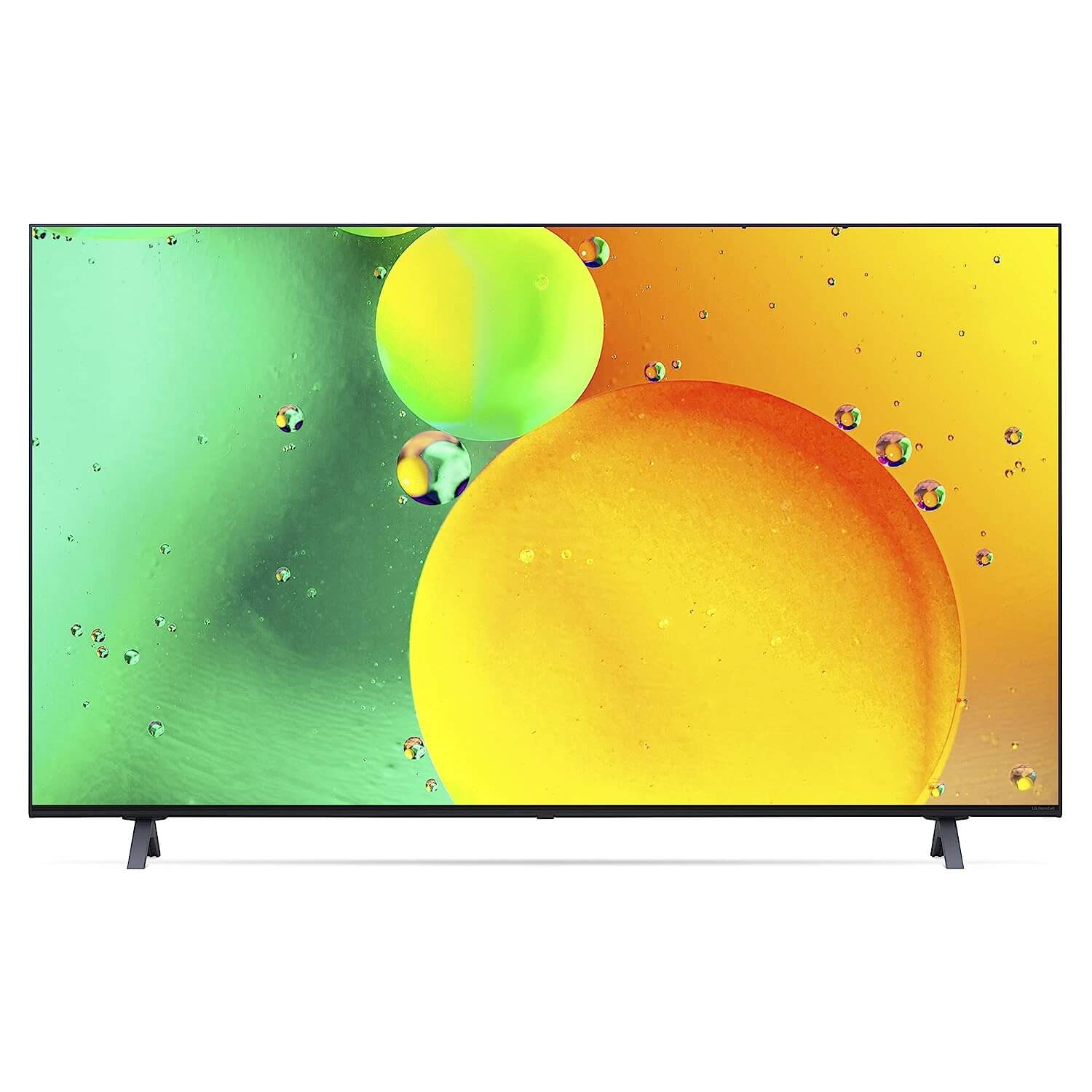
However, LG has made some significant advancements over earlier models for its 2020 NanoCell Series 4K TV, which led to a display that competes a little bit better than the industry average. Although the TV's performance in terms of high dynamic range (HDR) still falls short of a few other companies' less expensive versions, its smart features and viewing angles are among the finest available. LG 50 inches Nanocell Series 4K TV Specifications
LG 50 inches Nanocell Series 4K TV Review1. DesignThe attractive but a little traditional design of LG's 55-inch NanoCell 4K TV is an advantage. However, it should look great hung on a wall or placed on any home entertainment console, even if it is unlikely to attract customers based just on appearance. When compared to other LCD TVs that do not use edge-lit dimming, the panel's profile is around 2.8 inches thick. The NanoCell has a profile that is typically the same thickness from top to bottom, despite many other TV models that have smaller features at the top and then wider profiles at the bottom where the inputs are located. Following packaging, the accompanying left and right foot supports must be screwed into the bottom of the screen. The top, sides, and bottom of the screen are surrounded by a narrow bezel, while the bottom is surrounded by a broader border. Four side-facing HDMI (and one eARC) connections are among the inputs located on the rear left of the display. As a result, additional capabilities from compatible sources, notably Variable Refresh Rate (VRR), are made possible by two of these HDMI connections' compatibility with the HDMI 2.1 protocol. 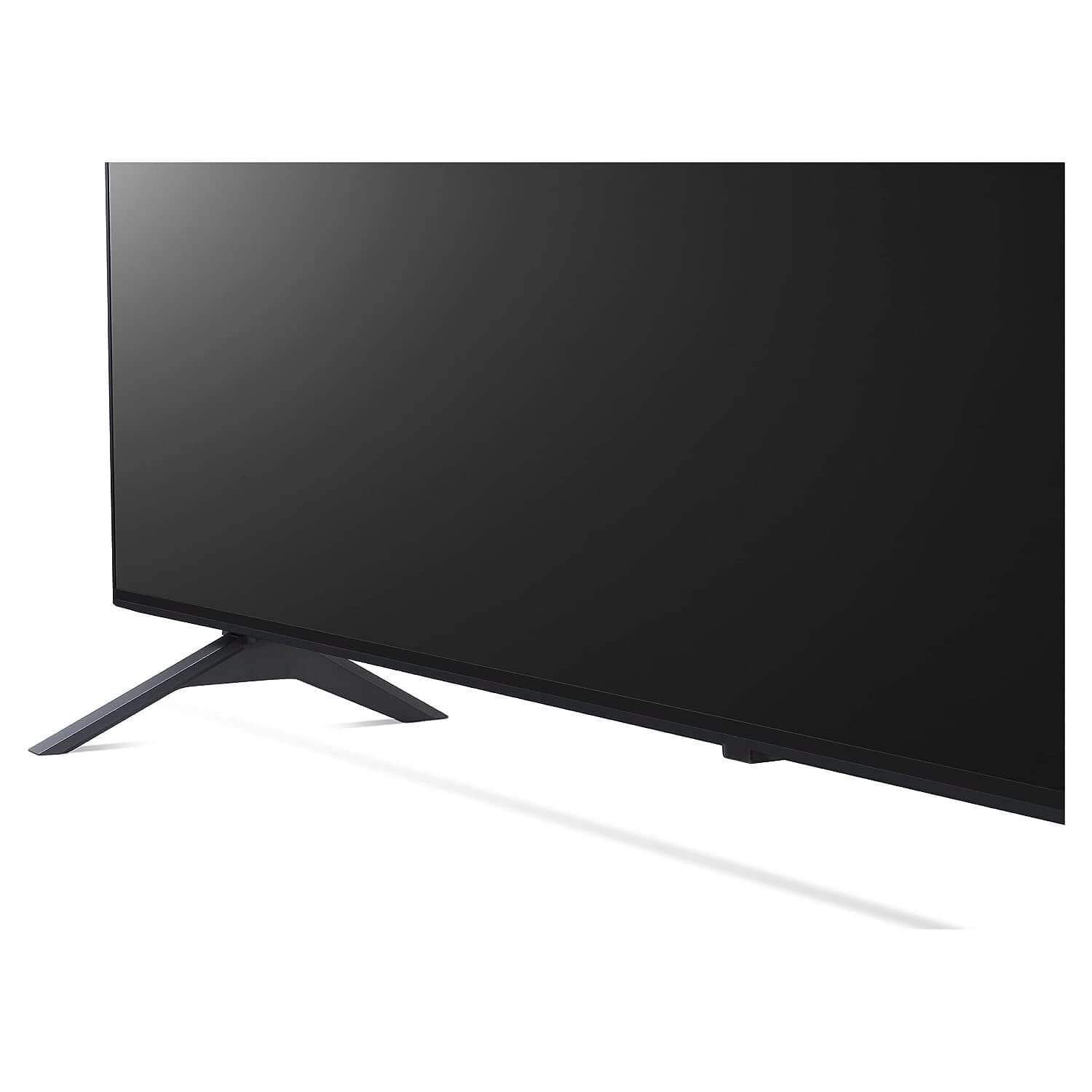
With built-in voice control for Google Assistant or Amazon Alexa, LG's special Magic Remote is a showstopper. Only a few buyers will be attracted to the remote's fairly bulky and massive form. Still, it does include an innovative point navigation function that lets you move the pointer by directing the remote at the monitor. The procedure is well known to everyone who has ever used a Nintendo Wii. Alternatively, you may browse by using the navigation wheel and clicking buttons on the remote control. 2. InstallationYou only need to put the TV together when it has been unpacked, connect any external sources, and turn it on. The setup procedure is straightforward and calls for doing the customary variety of housekeeping tasks, such as Wi-Fi settings, firmware upgrades, and numerous privacy and terms of service agreements. The HDMI Audio Return Channel (ARC) of the TV was attached to an Onkyo AV receiver during setup. There were also other devices connected to the receiver that passed information through to the display, including a Roku Ultra, a Nintendo Switch, an Xbox One X, and a Panasonic 4K Ultra HD Blu-ray player. In addition, an HDMI connector on the TV was directly connected to a Fire TV Stick 4K. 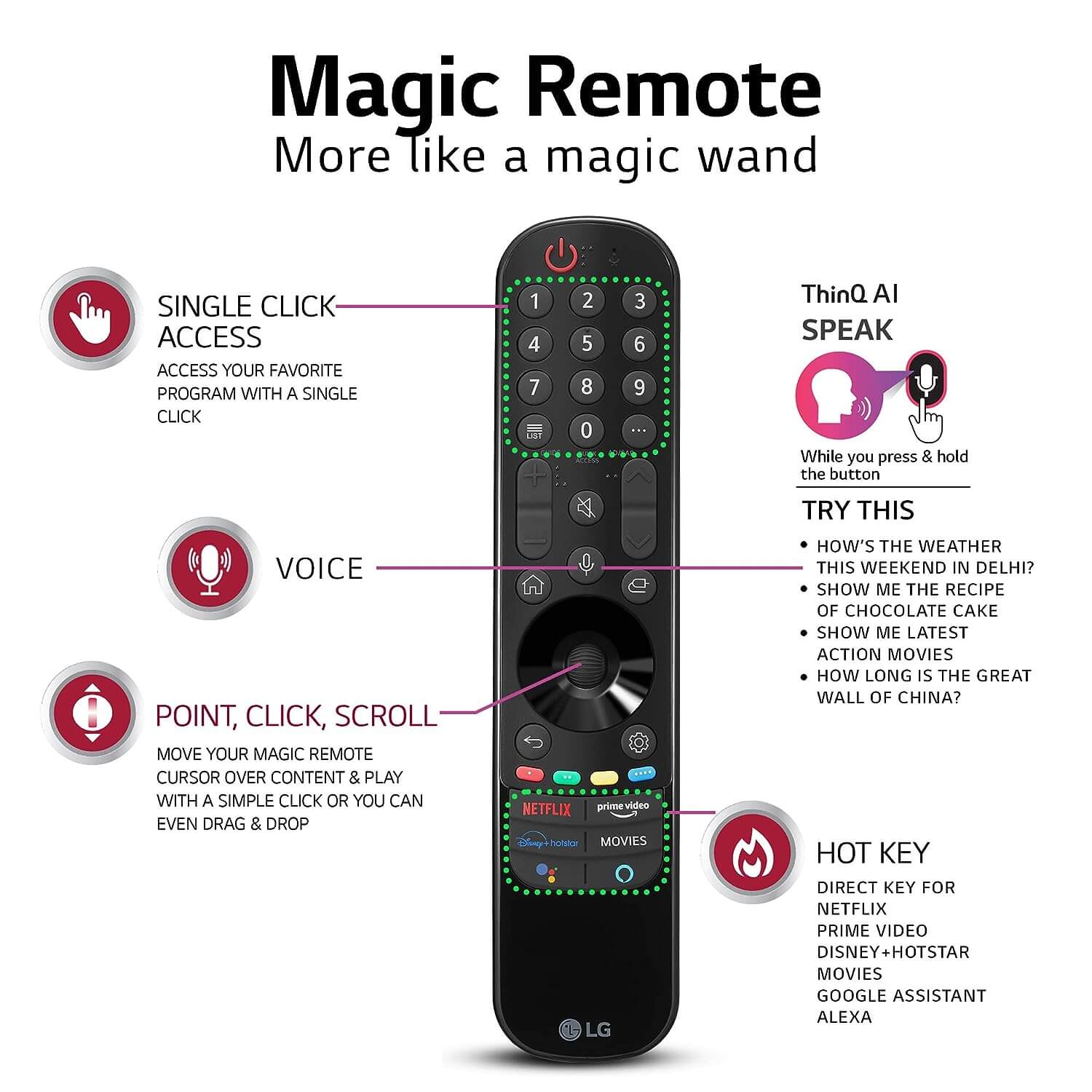
Once everything was connected, all of my gadgets seamlessly went through to the TV, providing full 4K HDR and Dolby Atmos surround sound capabilities when available. The NanoCell offers multiple settings and choices, including a useful Filmmaker Mode setting, for those who want to further edit the image. The Filmmaker Mode preset, approved by the Director's Guild of America (DGA), effortlessly removes distracting picture enhancements and processing, such as motion smoothing and artificial sharpening, giving viewers an easy way to enjoy films and television closer to how the filmmakers intended. For the best out-of-the-box Standard Dynamic Range (SDR) and High Dynamic Range (HDR) image, I suggest selecting Filmmaker Mode in light of this. In order to get the perfect contrast, I also suggest selecting the High local dimming option. In spite of this, Filmmaker Mode is not enabled while using a streaming service or Ultra HD Blu-ray to view Dolby Vision content. I advise utilizing the Cinema option with local dimming adjusted to High for the most precise Dolby Vision picture. 3. Picture PerformanceOverall, LG's NanoCell is a strong performer, but the display differs significantly from other premium and intermediate LCD TVs on the marketplace in terms of certain important pros and shortcomings. 4. Aspect ratios for IPSThe NanoCell relies on an In-Plane Switching (IPS) screen rather than a Vertical Alignment (VA) panel, in contrast to many LCD TVs from the competitors. So, what makes the two different from one another? Simply said, VA panels are considered to have higher contrast and black levels, while IPS panels are famous for superior viewing angles, letting pictures seem nice even if you're positioned off to the side. The viewing angles of the IPS display are satisfactory in real-world use. The LG NanoCell retains its appearance quite well, even if it's positioned off to the side, unlike LCD TVs from other manufacturers, where off-axis colors and contrast typically decrease and distort a lot. This is excellent if your sofa cannot be positioned immediately in front of the TV or if you often have watching parties with people situated all around the house. However, local dimming can become more obvious when off-centre, viewing angles are generally a major advantage of this paradigm. Strong screen equality is also present throughout. There are sometimes some minor imperfections evident throughout the display, although they are less noticeable than on other Vizio and Hisense TVs, and there are fewer vertical lines and occurrences of the "dirty screen" look. 5. Dimming LocallyThe contrast is really good, considering the IPS screen. The NanoCell's full-array local dimming functionality is one reason for this. Many midranges and high-end LCD TVs come with a useful local dimming function, which enables the screen to dim and brighten in certain areas. However, compared to other TVs in this price range, the NanoCell 90 uses fewer dimming zones. Approximately 32 zones are included on the display. However, LG won't provide an exact figure. For purposes of comparison, the 55-inch Hisense H9G has 132 zones, the TCL 6-Series has 160 zones, and the Vizio P-Series Quantum has 200 zones. Although there are additional elements that affect local dimming effectiveness, ultimately, the more zones, the better. The NanoCell 90 exploits its comparatively small number of zones to provide respectable brightness and black-level performance. In actuality, a material with a standard dynamic range (SDR) appears almost faultless without any noticeable fading artifacts. The true test, however, is how well high dynamic range (HDR) material appears, which is pretty much standard practice for premium 4K televisions. 6. HDR PlaybackI viewed a number of 4K Ultra HD Blu-ray discs and HDR streaming movies from services like Netflix and Disney Plus in order to do testing. Overall, HDR movies and television programs have superb visual quality and effectively use the broad color gamut and dimming of the TV. 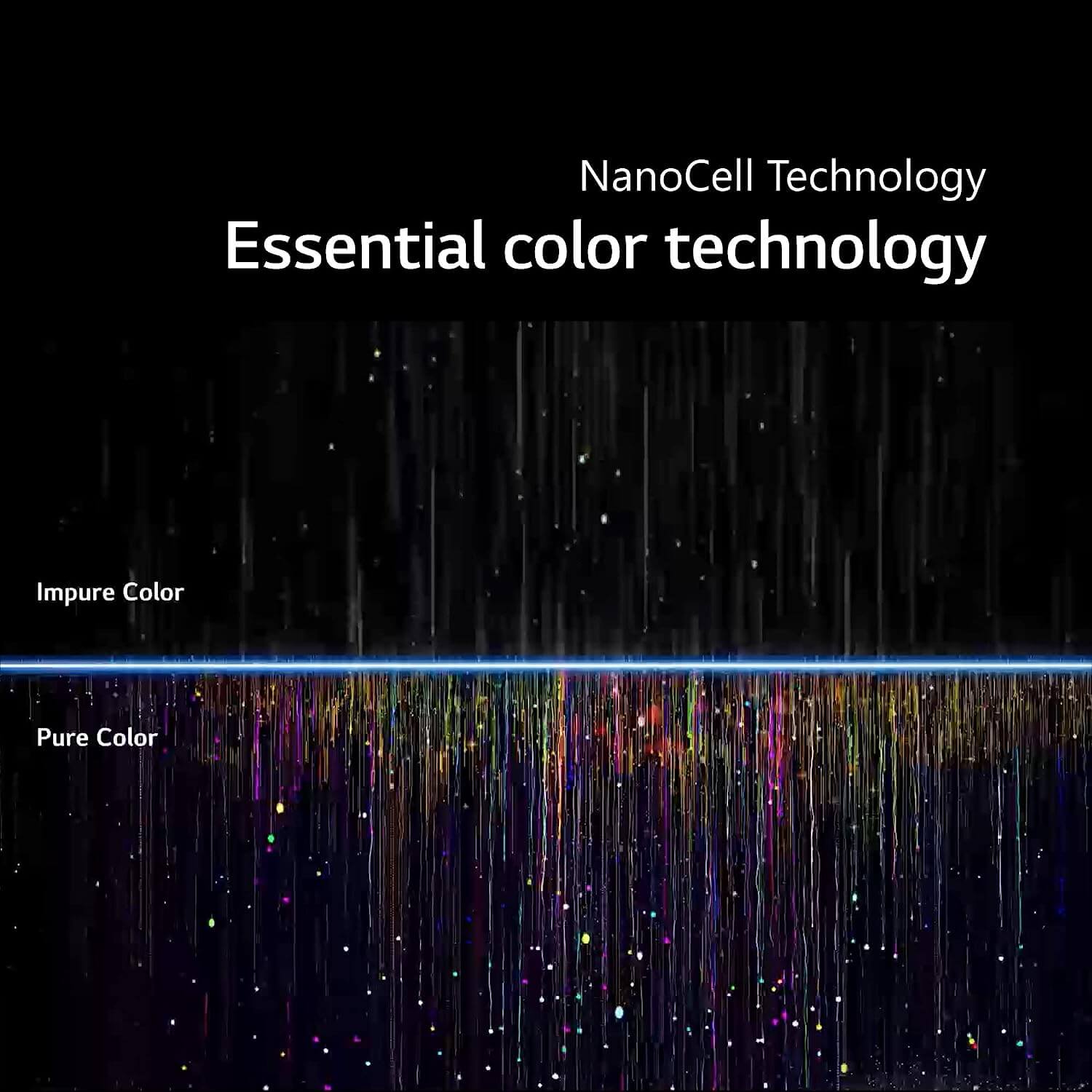
The NanoCell really uses a slightly different method that incorporates a nanoparticle filter on the screen, in contrast to many other flagship LCDs that employ quantum dots for enhanced color. A comparable spectrum of colors is produced as a consequence. However, there are a few problems worth mentioning when assessing the TV's HDR performance as a whole. The NanoCell cannot shine as brightly as some comparable 4K HDR TVs priced between $800 and $1,200 to start with. Peak brightness is much lower than the 1,000-nit standard for which many HDR recordings are graded, hovering around the 500-nit level. In terms of HDR material on a TV, what does this truly mean? Basically, the outstanding highlights don't stand out as much compared to what they do on other competitor models in this class. The brightest colors in HDR movies will likely seem less powerful and more dimensional on the NanoCell if this TV were put side by side against one of the Hisense models. Although the normal peak brightness statistics on a 50-inch LCD in this price range are a little unsatisfactory, the HDR capability on the TV significantly improves the picture quality. In reality, when I view HDR10 films on TV, I seldom ever feel as if there is anything I am missing. Although the NanoCell might, at times, produce the inky look that better LCDs do, black levels are also strong. In panoramic movies, for example, bars above and below the picture often don't go completely black but instead stay dark grey. Vignetting, blooming, and other dimmer artifacts in darker HDR situations are also noticeable and sometimes disturbing. Due to this, light-coloured backgrounds are illuminated by bright objects like flashlights. This kind of artifact is typical with local dimming TVs, although it is a little more noticeable here than on competitive models I've tried. However, the business has made significant advancements in this area since blooming is less bothersome on the NanoCell than it was on earlier LG TVs. 7. Dolby VisionIt's important to note that I noticed a few unexpected irregularities while watching Dolby Vision videos from various sources. The image seems extremely dark and sometimes lacks the punch in highlights one would anticipate from HDR material while viewing a variety of Dolby Vision films using the Cinema option via the TV's built-in applications, such as Netflix. The good news is that, as a consequence, there aren't many local fading artifacts. However, highlights seem to be brighter and more dramatic when utilizing a Fire TV Stick 4K or Xbox One X attached to one of the TV's HDMI ports to view the same Dolby Vision movies. Blooming from the local dimming is also much more apparent at the same time. Additionally, this is true while using a Roku Ultra connected to the TV to view the same streaming movies and TV shows in HDR10. In order to find out why this disparity was happening, I contacted LG. Following an investigation, LG offers the following explanation: "The picture quality handling of Dolby Vision material is identical on either the local app or HDMI input & has been confirmed via the Dolby Certification process. The color and brightness may seem different based on the device due to extra upgrades made by the various device makers. When everything is taken into account, Dolby Vision material seems to use the TV's brightness abilities better and match the TV's HDR10 performance, so I eventually chose to view it on my Fire TV Stick 4K. 8. Features of Smart TVsThe LG NanoCell utilizes the webOS smart TV platform, providing a quick and responsive system with a decent selection of applications and lifestyle functions. The built-in compatibility for Google Assistant or Alexa on the accompanying Magic Remote lets customers choose which voice assistant they wish to utilize. You can quickly search for material, open applications, and discover answers to a variety of issues thanks to the effective speech recognition and digital assistant features in use. Almost every other major online app you might desire is also included, including Netflix, Disney Plus, Hulu, Amazon Prime Video, Vudu, Apple TV Plus, and Peacock. When accessible, support for HDR10, Dolby Vision, and Dolby Atmos surround sound is also included. However, there is one significant app exclusion that may be a problem for certain users: HBO Max is not included. It is challenging that this service isn't offered here, considering that Roku and Fire TV devices are also presently lacking it. I haven't seen any significant latency or crashes, which is a relief, and overall navigation is quick. LG's webOS does not have the traditional fullscreen app homepage seen on some other streaming systems, such as Android TV and the Roku OS. Instead, hitting the home button on the remote activates the display of an app menu in a horizontal pop-up menu at the bottom of the screen. In general, this method is quite effective and lets you switch between apps without having to return to the homepage. 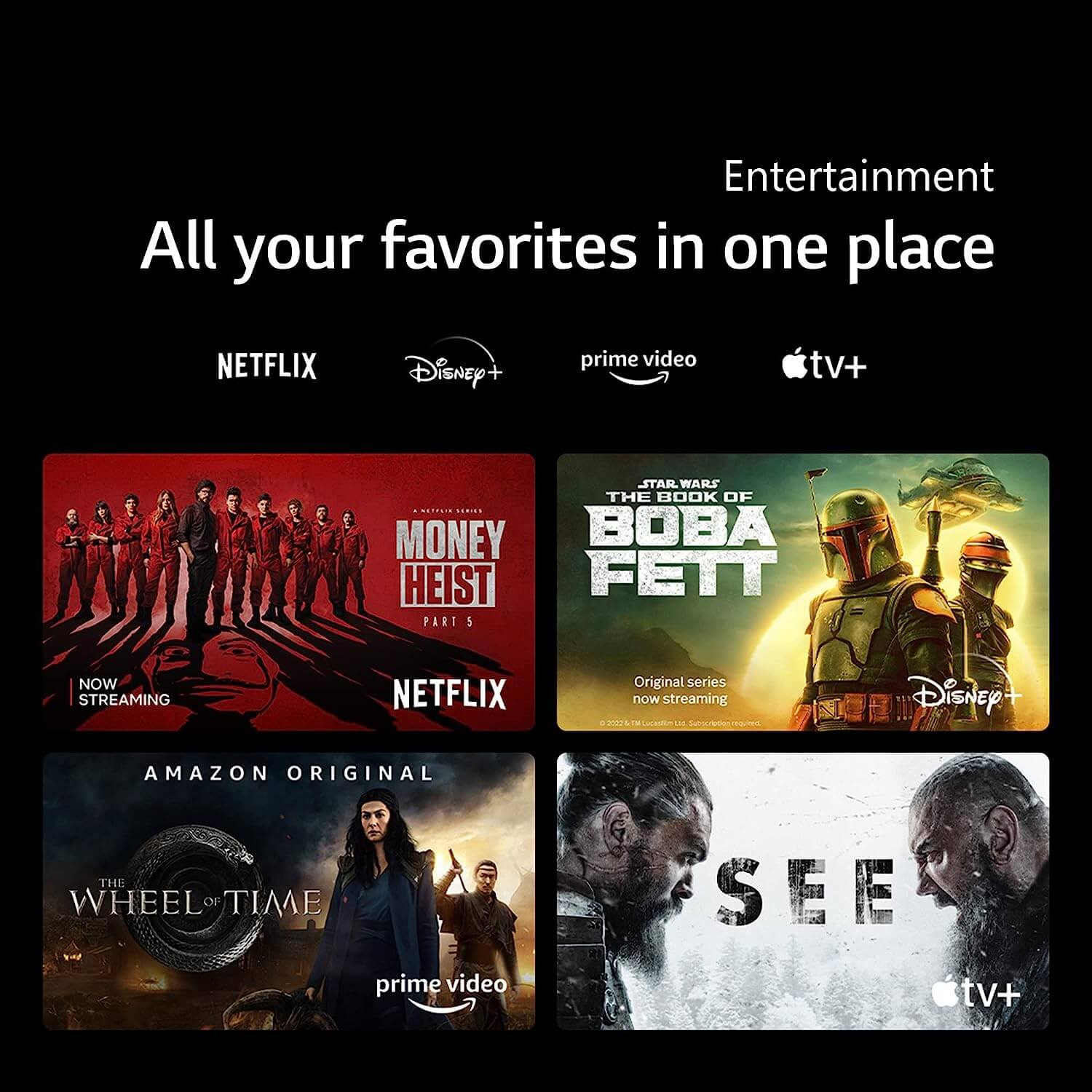
If you are equipped with an antenna, you may use LG Channels, which offers a wide selection of free Internet TV channels when combined with over-the-air networks. Cheddar News, American Classics, The Broadway Channel, and more channels are available on LG's complimentary channel lineup, which Xumo powers. These kinds of free integrated channel lineups are already widespread on many smart TV platforms, but although being a pleasant addition, they don't actually replace cable or a full-fledged live TV subscription. Therefore, I hardly ever find myself channel-surfing these choices. ConclusionParticularly in terms of smart features and viewing angles, LG's new NanoCell TV delivers strong overall performance. The display's contrast and brightness levels fall short of other more affordable TVs from well-known manufacturers, which is a drawback. Customers looking for a large-screen LCD TV with extensive digital assistant support for their living room may consider this product as a good investment.
Next TopicTCL 138.8 (55 inch) ONKYO Soundbar Series 4K Ultra HD Certified Android Smart QLED TV Review
|
 For Videos Join Our Youtube Channel: Join Now
For Videos Join Our Youtube Channel: Join Now
Feedback
- Send your Feedback to [email protected]
Help Others, Please Share









